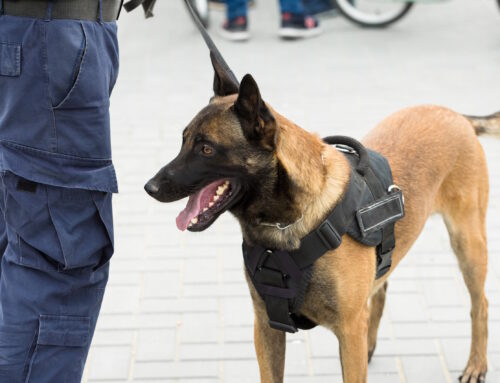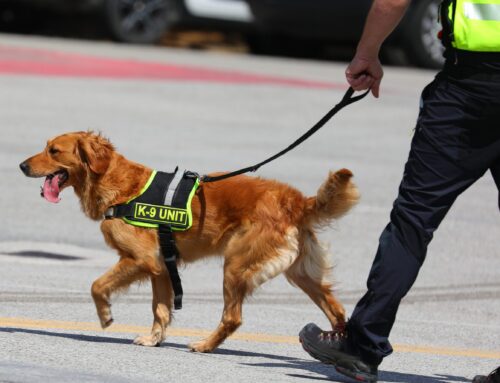There is a traditional perception of canine security that is gleaned from TV crime series or action films, or is based on an idea of security dogs we formed a few decades ago, when training practices were very different and legislation was almost non-existent. Today, canine security is a tightly controlled sector and involves highly trained professionals with a range of precise skills.
At React K9 our canine security experts are frequently fielding questions which lead us to believe there are some common misconceptions about security dogs, how they behave, what they can be trained to do and how they should be managed. So here we have put together some of the popular myths that we come across, and have used our knowledge and expertise to debunk these and make the reality of the situation as clear as we can.
1 – Security dogs bark all the time
No. Security dogs are not simply an alarm system that barks at anything, in fact, most of the time they will be quieter than your pet dog at home. Canine security dogs are specifically trained to only bark when needed to, i.e. when triggered by a threat. Their bark is to warn off intruders or intimidate an attacker, the rest of the time they will sit quietly. A domestic dog in your home will not be trained in the same way and may bark at a cat they see at the window, or distant dogs they can hear barking outside. Security dogs are trained not to react in that way. Furthermore, some security dogs are specifically trained for detection, i.e. for airport or event security, and hence aren’t aggressive and don’t need to bark at all, they have different, more physical reaction alerts and forms of communication and body language.
2 – Security dogs don’t behave like normal domestic dogs
While they might use barking differently, as outlined above, in many other respects security dogs are just the same as normal domestic pets. And just like humans, security dogs are only at work for certain periods of the day and week, and enjoy their time off. Security dogs can therefore be loving companions and form strong emotional bonds with their owners and handlers. Equally they need affection themselves and to be shown love and care, which can be stroking, cuddling and the odd treat. Also, of course security dogs need feeding, watering and toilet breaks just like a domestic dog.
3 – Security dogs are essentially attack dogs
No. First of all, security dogs can be trained for various disciplines, some of which require no aggression at all, such as dogs trained to detect drugs, weapons and illicit substances. But also, security dogs are highly trained and can show great discipline and control. This level of obedience means they will only attack when triggered, and if that is what they are trained to do. Also, they are trained to attack a specific target, to deter threats and protect their owners or an asset. They will not attack and be aggressive indiscriminately, and therefore security dogs are perfectly fine to be kept around children and other animals.
4 – Any dog can be trained to become a security dog
It is true that all dogs can be trained to some extent, but a security dog needs skills such as high obedience, high sensitivity and alertness, intelligence, loyalty and physical capabilities. While a specific dog breed might possess one or two of those characteristics, only certain ones possess all of them, such as German Shepherds and Rottweilers, for example. So yes, all dogs can be trained to do certain things, but that doesn’t necessarily make them effective security dogs.
5 – Security dogs are the only security measure you will need
Canine security is a very effective security measure for a commercial business, or at an event, but it should form part of a broader and more comprehensive security plan. Professional security is usually based on a risk assessment, which will identify a range of potential threats and help to develop a plan to address each one. For some of these threats, canine security might not be suitable, such as checking vehicle registrations, for which you would use an ANPR system and barrier, or assessing the credentials of authorised personnel, for which you would use an access control system. So canine security can be used in tandem with these security measures, plus other controls such as CCTV, intruder alarms and perimeter fencing, to form a robust and effective security plan for your business, and in most cases, it isn’t used in isolation as the only security measure.
Contact React K9 for the best canine security
If you need SIA-licenced and NASDU-trained canine security for vacant properties, event security, site evictions or construction site security, contact our experts at React K9 and we can work with you to implement effective canine security for your business or event.




